Upcoming Technology Choices in Soybeans
There is a lot of talk about the soybean technology trait options growers can choose from in the upcoming years. Between Round Up Ready 2 Xtend®, Round Up Ready 2 Yield®, LibertyLink® and LibertyLink® GT27 all approved for production as well Enlist E3™, Xtend Flex® and MGI (Mesotrione, Glufosinate, and Isoxaflutole) currently in route for foreign approval there are enough choices to make any grower look at their options a little more in depth than in years past. With all these choices, how do growers decide which platform is best for their operation? Going back to the basics and [...]
Selecting Soybean Maturities
This article was originally written for the "Burrus Buzz." Several industry experts have been urging growers to plant soybeans earlier and earlier. There is substantial data and on-farm experience to support this logic, however, one remaining question for many growers is, “Should I change maturities for an earlier planting date?” On a recent Twitter poll posted by ILSoyAdvisor, they asked, “If you are planting soybeans in April, how are you going to choose your maturity group?” Given three possible responses, 33% of respondents chose “Same as for May planting,” 15% selected “Shorter for early harvest,” and 52% opted for [...]
Soybean Breeding Today
Soybeans have been grown in the United States since 1851 when Dr. Benjamin Franklin Edwards received a packet of seeds from a Japanese sailor. He gave them to his friend John H. Lea who planted them in his garden in Alton, Illinois. From there, soybean cultivation spread across the Midwest, with beans initially being used as a forage crop for livestock. In 1904 George Washington Carver discovered the utility of soybeans as a source of protein and oil, their benefits to soil health and their value in crop rotation. Resource shortages during World War II greatly increased the demand [...]
WEBINAR: Improved Seed Treatment Stewardship Through Innovation
In 2018, nearly 89 million acres each of corn and soybean were planted across the United States. The seed treatment products available for growers to use to protect these crops from damaging diseases, insects, and nematodes represent valuable tools during planting season. It is essential to ensure that these products are used in an efficient and responsible manner. The stewardship and sustainability of seed treatment products have been improved through several developments through the years. These types of technological advancements provide better stewardship by reducing the potential exposure of pollinators and other non-target species in our agricultural landscapes. 1 [...]
Soybean Seeding Rates
Most growers with more than 20 years under their belt recall planting soybeans in narrow rows with a drill at populations of 225,000 to 275,000 seeds per acre. The high seed rates were a way to control weeds and secondly, drills literally pour seed instead of precisely placing it in the furrow. However, when Roundup Ready® seeds came on the market and weed control became much easier growers moved to planting soybeans in either 30-, 20- or 15-inch row spacing. At the same they begin dropping populations to 200,000 to 180,000 to 160,000 and now to 140,000. Of course, [...]
Enlist E3™ Soybeans
American growers have heard a lot about the Enlist™ weed control system coming to market soon in soybeans and many are eagerly awaiting full approval so they can take advantage of this new herbicide system. The term “full approval” refers to approvals of the new trait stack by all markets that import soybeans globally. Currently, all import markets have approved the Enlist trait stack except China and the Philippines. Many professionals in the seed business are not concerned about the lack of approval in the Philippines where there is a known process for approval and Enlist is on an [...]
Are You Managing Soybeans After R4.5?
In the past 5 years, Illinois soybean yields have risen exponentially compared to the previous 10 – 15 years. A lot of this increase can be attributed to modern breeding programs; however, modern management has also improved. High-yield producers view a crop as a series of decisions, throughout different growth stages, that add up to improved yields. These growth stages usually include “early,” “middle,” “late” and now - R4.5. Early Season: Anything associated with improving emergence and early vigor. Seed treatments allow for early planting dates, while ensuring adequate stands. Tillage improves seed-to-soil contact and reduces early season root [...]
PODCAST: Soybean Flowering and Pod Development
Todd Steinacher, CCA Soy Envoy and west-central Illinois regional agronomist with AgriGold, discusses early soybean development, flowering and pod formation, how to detect pod abortion and predict potential yield for harvest. Listen to the podcast here:
Dwarf Beans Anyone?
Growers want tall soybeans that canopy over the row and have lots of nodes and a few lower branches to produce a lot of pods. Plant these same varieties in Illinois prairie soils and they grow 5 feet tall and begin to lodge with some corresponding yield loss. And the varieties we grow today were largely developed and tested under 30-inch row spacing and still perform best in that 20- to 30-inch spacing. Dr. Richard Cooper, retired soybean breeder who worked both at the University of Illinois and then at The Ohio State University, has long advocated growing dwarf [...]
Tracking node count
Soybean yield is determined largely by number of seeds per acre. The more seeds the bigger the yield. Seed size and weight also plays a smaller role in final yield. Seed number per acre is largely determined by pods per plant and acre. And yes, seed number per pod has an effect, but like seed weight, it’s a smaller component. In my experience if you track seeds per pod across a plant and field it will range from 2.5 to 3 seeds per pod. Sure, you will find a 1-bean pod at the top, 4-bean pods and sometimes a [...]

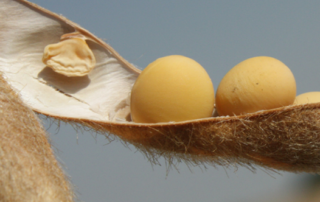
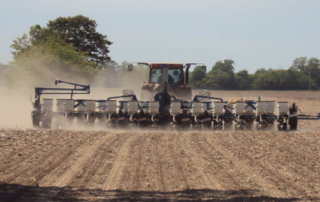
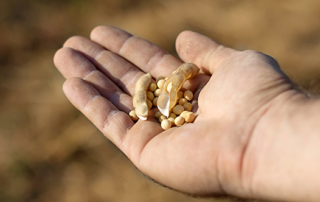
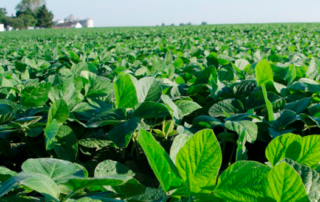
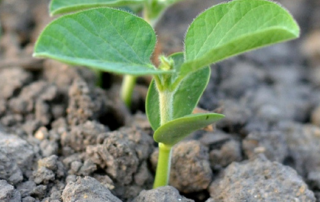
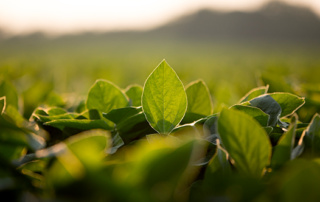
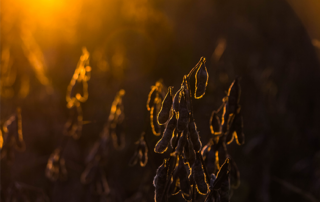
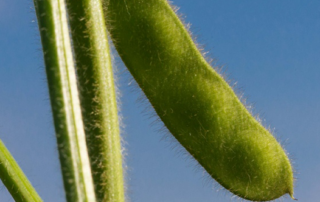
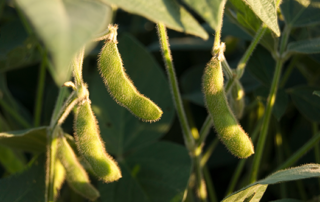

 and then
and then